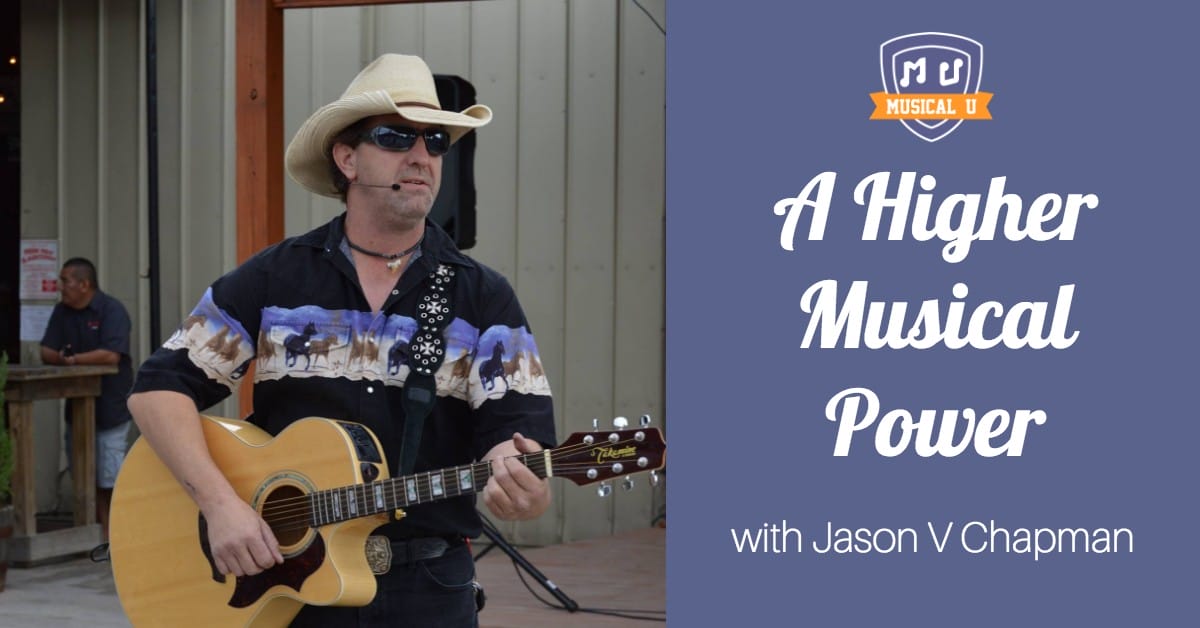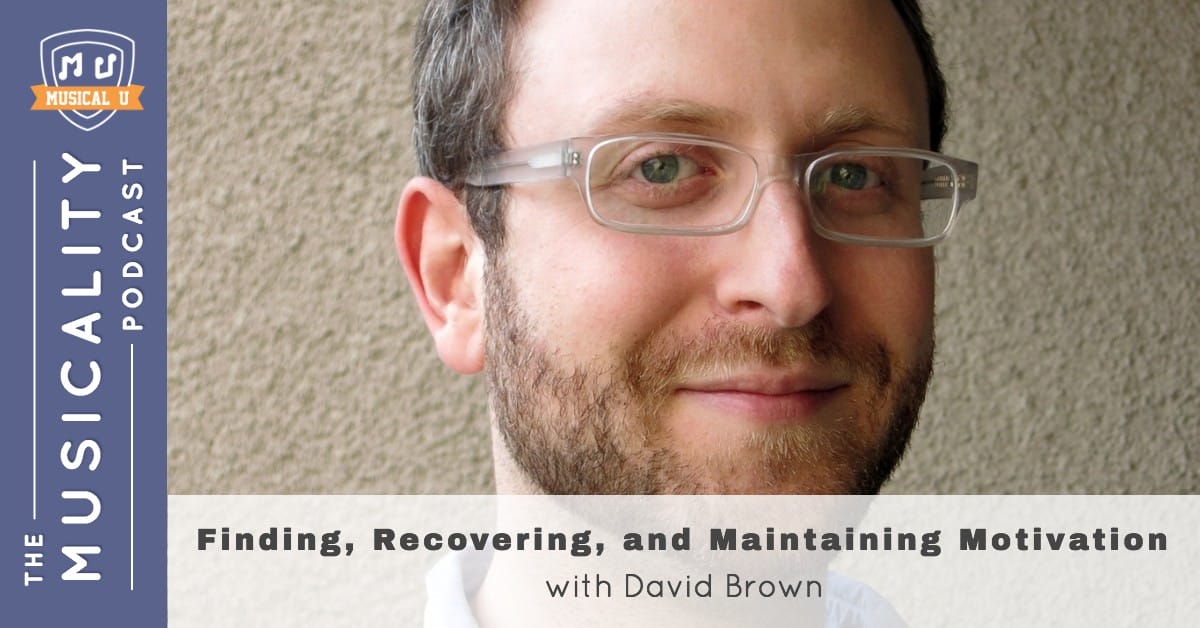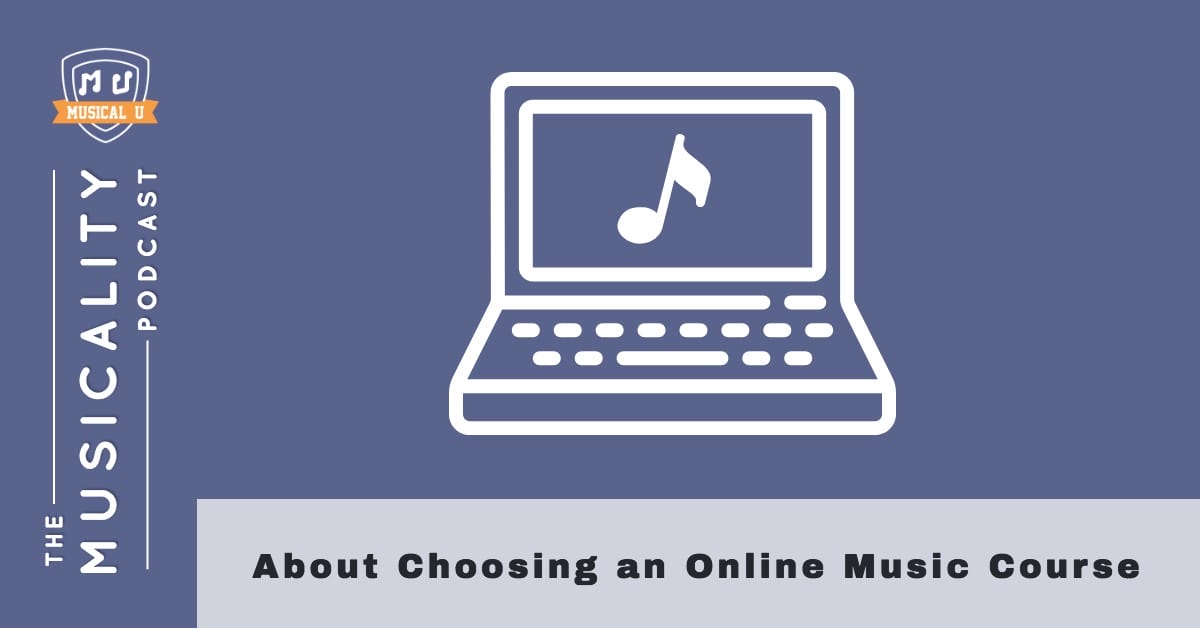The world of online music learning is ripe with opportunity for a musician interested in self-directed learning. In this episode, we explore the factors that should go into choosing an online course that is compatible with your musical goals and vision.
Listen to the episode:
Links and Resources
Enjoying The Musicality Podcast? Please support the show by rating and reviewing it!
Rate and Review!
Transcript
In our previous episode with David Asher Brown we talked a bit about the advantages and drawbacks of learning an instrument online. And this has been a frequent theme here on the podcast because so many of our guests are doing really terrific work in online music education – off the top of my head I can remember discussing it in our episodes with Jeremy Burns and Matthew Scott Phillips from Music Student 101, with Chris Owenby from Practice Habits, with Professor Anders Ericsson, author of Peak, Dave Isaacs, the “Guitar Guru of Nashville”, and certainly several more.
As was probably clear from my conversations with them all, and the very fact that I myself run Musical U, an online musicality training provider, I really believe in the enormous potential and value in online training for music.
The trouble is that online music education – and online education in general – is still at a very early stage. It’s only really in the last five or ten years that someone wanting to learn an instrument or develop their musical ear or study up on music theory has had the option not just to learn in person, or self-study with books – but to go online for live 1-to-1 video lessons, or use extensive multimedia and interactive training material.
There’s a massive opportunity – but if you’ve ever explored this yourself you’ll know that it’s all too easy to spend a lot of time and even a lot of money – and have very little to show for it after.
Have you ever bought a course online – and then not finished it? Maybe you only ever looked at the first few lessons, or maybe you watched it all but never actually put it into practice. I know I’ve certainly done that more than a few times. Or maybe you’ve tried to stick to free stuff and spent hours researching and finding and gathering all these great webpages and resources – but then your enthusiasm fizzles out because it all seems too overwhelming and jumbled. I’m guilty of that one too.
You know there’s an opportunity there. But how do you turn the incredible availability of great learning resources into a learning process that actually happens and actually delivers you the results you’ve been craving?
In this episode I’m going to make some suggestions, based on our experience at Musical U. You won’t be surprised to hear these are all things we’ve baked into our training system at Musical U – and if you’re looking for musicality training like playing by ear, improvising, singing in tune, tightening up your rhythm, and so on – then please do consider Musical U. But what I’m going to be talking about applies to any kind of online music learning, including for learning to play an instrument. And actually it pretty much all goes for any online course, not just music.
We’re going to talk a bit about how to choose a suitable course to maximise your odds of success. Then in a future episode we’ll discuss how to make the most of the course – and actually get results.
Choosing a course
So with the incredible range of options available to you online, how do you pick the right course? Specifically, how do you pick one which is most likely to actually get you results – rather than just seeming flashy and exciting but not actually delivering a good learning experience.
Here are three important criteria I think you should keep in mind.
Aligned with your musical goal
First things first: Make sure that the course is really well aligned with your true musical goal. That might sound obvious, but we’ve all had that experience where we start looking for something online, and a few hours later we’ve explored and unpacked the topic in so many directions, and heard so many opinions about the right way to learn it or what you want to learn first, and so on – that it can be easy to end up thinking you “should” go off and learn X even though it was really Y that had you excited to begin with.
That’s not to say you can’t learn valuable things about how best to pursue your goal by doing research. A lot of the guidance we provide to members at Musical U is helping them unpack what we call your “Big Picture Vision” and then figure out what concrete training is going to get them there. But what I want to suggest is that you make sure you don’t get side-tracked. Don’t end up with a laundry list of skills and topics and essential prerequisites that actually end up sapping your enthusiasm and making the whole thing feel untenable. And don’t get tempted by a course that looks shiny and useful – but isn’t actually what you set out to look for.
If you want to know more about goal setting and planning I’m going to link in the shownotes to an interview I did on Brent Vaartstra’s Learn Jazz Standards podcast where we talk all about that, and I think it would be a helpful framework for you to have in mind before setting out to find a course.
So that’s the first criterion: make sure the course is aligned with your real musical goal.
Flexible
The second criterion is to find a course that’s flexible. I could spend a whole episode or three ranting about the problems with the “course” model for online learning, and I hesitated to even use the word “course” in this episode. Because in learning music, and doubly-so in musicality training, having a single one-size-fits-all straight line “course” where you have to go lesson by lesson in a certain strict order, almost never works. And I think this is a huge part of why course completion rates are so low. People are coming in with wildly varying backgrounds and goals and abilities, and trying to force everyone to follow the same strict path is just a recipe for frustration.
So you want to find a course that’s flexible. Ideally one which is modular, meaning that learning a skill involves a combination of different modules and you have some control to choose the ones which ones best match to your needs and desires, and assemble them in a way that makes most sense for you.
And whether it’s modular or not, you want it to be flexible in the sense of not restricting your progress. If you’re too advanced for certain sections you shouldn’t have to plod through them getting bored, and if you’re struggling in a certain area you shouldn’t be forced to master it before being able to move on in some way. You’ll probably want a course that’s self-paced, meaning you don’t have to complete a certain lesson by a certain date – or, if you’re someone who really thrives on deadlines, you might actually prefer a week-by-week course that helps you keep moving forwards.
To give a few examples from Musical U, we have almost no prerequisites on our modules, so while we recommend certain sequences that make sense, if you want or need to leave out a module, or you haven’t quite mastered it, you can still move on with your overall training. All our quizzes have a passmark not of 100% but of 80%, showing that you’ve got the hang of the skill even if you haven’t pushed your learning to the point of perfection (which for most people also equals the point of total boredom in your training!) And of course the whole system is modular, so while our Roadmaps mimic the straight-line course to give you a nice clear route, how you choose to follow that path is entirely flexible and personalisable.
So you want to look for a course where you can be confident that if things don’t magically go 100% perfectly and easily throughout you won’t feel stuck, limited, bored or frustrated. You’ll have some flexibility to continue your learning and maintain your enthusiasm and success.
Great support
The third criterion I’d suggest is that you want a course which provides great support. Again, this might seem like a no-brainer – not least because almost all courses will make a point of offering some form of support. But you might be surprised.
For a start, there are still a ton which provide only technical support. For example most mobile apps are like this. If something’s broken then they might respond and help you, but if you’re stuck with your training, there’s really no way to get help.
Or many online courses will offer a way to contact the course creator if you have questions. But frankly, that’s just not good enough. Because in my experience, most adult learners are really hesitant to make use of that.
For myself, I’m not a particularly shy person, I’m happy posting online and so on. But if I get stuck in an online course, am I going to write an email to the course creator asking for help? Probably not. I like to think of myself as independent, I think in honesty I’d be a bit embarrassed to admit I hadn’t managed to learn the thing myself, I would assume that the course probably works well for everyone else so it’s my fault not the course’s, and so on. I’ve found that most of us are like that – we’ve been preconditioned by the educational system to think that if we’re not learning, it’s our fault and we need to try harder. Which means we’re not going to really make use of an on-demand support option like that.
So what does great support look like? It’s more proactive than that. It’s about providing a way for you to receive help without needing to summon up the courage and have the self-awareness and confidence to actually ask for help. And I should mention there that often the problem is we don’t even know how to ask for help! We know we’re stuck but sometimes the very problem is we’re not sure what’s gone wrong. So that can make it really hard to send a message asking for help too.
The kind of proactive support I’m talking about means that you’re part of a community in some way. You’re visible to the course instructor without needing to consciously step forwards with a question. At Musical U we do this very much through having an online community with discussion boards and a way to post updates about your training, and it means our team can essentially keep an eye on our members. Not in a creepy way and not in an annoying way. Just for example so that if someone is clearly making great progress and then goes quiet for a week, or is posting updates but sounding increasingly frustrated, we can step in and help them solve the problem – often before they’d even realised there was really a problem there.
I know that people considering Musical U are often confused why we make a fuss about the community stuff when it’s the training they’re really interested in. But the truth is that the community is the secret sauce that helps us offer fantastic support and help our members get results in their training. It’s not a distraction from training, it’s an accelerator for it.
So that’s one way to provide great support, and I’d encourage you to really ask yourself when considering an online course: What will I do when I get stuck? Because if the answer is “I’ll probably just stay quiet and give up”, or “I’ll send a message and hope to get a reply”, then I would say the support on offer is not really enough to help you succeed with that course.
Other factors
So those are the big three I wanted to suggest: Choose a course that’s well-aligned with your real musical goals, is flexible in the way you move forwards in your learning, and which provides great support, not just an email address or a way to send a message.
Now there are of course a ton of other things to consider, but I think you’re probably already aware of these. Things like price, convenience, the format of the material, the trustworthiness and expertise of the provider, and so on.
It’s not an easy choice to make – and so if you can find a provider that ticks all the boxes and provides a range of training not just a single course, that’s a really big advantage too.
I hope that helps you to choose your online music courses in a way that leads to greater success in the future. And in a part two episode we’re going to address just that: once you’ve selected a course, what can you do to maximise your chances of succeeding with it?
The post About Choosing an Online Music Course appeared first on Musical U.



